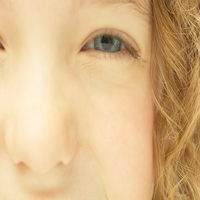Testing for Diabetes in Children

Diabetes mellitus can be a devastating illness, especially when it comes on suddenly in a child or adolescent. In young people it is usually so-called Type 1, or insulin-dependent diabetes, an autoimmune disease in which the immune system attacks the insulin-producing beta cells in the pancreas. The disease can have a major impact on the whole family, and sometimes people forget the way in which it can affect siblings whose needs often need to be subordinated to the needs of the newly diagnosed young person.
And here is an important point: even when it appears suddenly, the disease process may have been going on for some time before the clinical symptoms appear. By the time that blood glucose levels begin to rise, it usually implies that the damage to the insulin-producing cells in the pancreas has reached a critical point, and the chance of recovery is low. Anything that we can do to prevent the disease from progressing to the point of producing symptoms would be immensely helpful, and that starts with early recognition before the pancreatic damage has reached critical.
Although we now understand a great deal about the interplay of genetic, environmental and immunological factors that may lead to the illness, this knowledge has so far not helped us very much. There has been a tremendous need to try and identify the early stages of the disease, but that goal has been elusive.
In a study published in the Journal of Immunology researchers from the University of Queensland’s Diamantina Institute for Cancer, Immunology and Metabolic Medicine, are developing a simple test that may predict whether a child will develop Type 1 diabetes. They have identified a cellular pathway known as NF-kappa B that is activated in certain blood cells – monocytes and dendritic cells – of people with Type 1 diabetes.
In healthy people monocytes remain quiescent unless they are activated by an infection or other stressor. Then the NF-kappa B pathway gets activated.
In people with Type 1 diabetes things work the other way round: monocyte NF-kappa B was already activated in the blood, and when exposed to infection the pathway shut down. This tells us that there is a problem of immune control that may cause diabetes to develop in children. It is this monocyte abnormality that will hopefully form the basis of a diagnostic test.
This work is assuming more urgency since there are several trials of diabetes vaccines underway, and if successful, it may become possible to identify and intervene in children at risk of Type 1 diabetes before it occurs.
In addition, understanding why the immune system loses control before the disease starts should open up a number of new options for prevention and treatment.
Attention-Deficit/Hyperactivity Disorder: Diagnosis and Complications
I have had a great many requests to talk more about attention-deficit/hyperactivity disorder (ADHD): what it is, and what it is not; when is it a problem and when is it just “normal” childhood or adolescent behavior? And what evidence is there for non-pharmacological approaches?
Although there is a lot of information about ADHD available in books and on line, some is better than others, and some is misleading. I have recently had the privilege of giving a series of lectures on each of these topics, and many people have thought that I had a different take on the issue, so I an going to summarize some of the lectures here.
First I would like to direct you to a short article on the diagnosis on ADHD. The most important point is that we have to tell the difference between kids being kids and a problem that needs treatment.
Second is an article that talks about some of the problems that may follow if someone has ADHD and it is not diagnosed or treated.
Over the next two days I am going to follow up with articles that I have written on "Non-pharmacological and Lifestyle Approaches to Attention-Deficit/Hyperactivity Disorder":
Diet, nutrition, allergies and sensitivities
Herbs and supplements
Movement, exercise, sleep and environmental design
Massage, qigong, tapping therapies and acupuncture
Mind-body approaches to treating ADHD
Homeopathy and flower essences in ADHD
Using Integrated Medicine in ADHD
“Thoughts of themselves have no substance; let them arise and pass away unheeded. Thoughts will not take form of themselves, unless they are grasped by the attention; if they are ignored, there will be no appearing and no disappearing.”
–Bhikshu Ashvaghosha (Indian Playwright and Master of Buddhist Philosophy, c. A.D. 1st Century)
“The true art of memory is the art of attention.”
–Samuel Johnson (English Biographer and Essayist, 1709-1784)
“Attention makes the genius; all learning, fancy, and science depend upon it. Newton traced back his discoveries to its unwearied employment. It builds bridges, opens new worlds, and heals diseases; without it taste is useless, and the beauties of literature are unobserved.”
–Robert Aris Willmott (English Author, 1809-1863)
Twelve Tips to Reduce Your Risk of Colorectal Cancer

Colon cancer, or, more accurately colorectal cancer, includes cancerous growths in the colon, rectum and appendix. It is the third most common form of cancer and the second leading cause of death among cancers in the Western world. Colorectal cancer surpasses breast and prostate cancers as a leading cause of cancer deaths in both men and women.
And the key point is that with early screening and a few simple dietary modifications, you can dramatically reduce your risk of getting it.
These are the 12 Tips to Slash Your Risk of Colorectal Cancer
- Receive regular colorectal cancer screenings beginning at age 50 if you are at normal risk
- If you are at higher risk due to a personal or family history of colorectal cancer, other cancers or inflammatory bowel disease have a discussion with your health care provider about screenings before age 50
- Eat between 25 and 30 grams of fiber each day from fruits, vegetables, whole grain breads and cereals, nuts, and beans
- Eat a low-fat diet: colorectal cancer has been associated with diets high in saturated fat, particularly fat from red meat
- Eat foods with folate, such as leafy green vegetables
- Try to drink at least 80 fluid ounces of pure water a day unless you have a medical reason for not doing so
- Drink alcohol in moderation: 2 units of alcohol or less each day
- If you smoke, here is another good reason for quitting. Alcohol and tobacco in combination are linked to colorectal cancer and other gastrointestinal cancers
- Exercise for at least 20 minutes three to four days a week. Moderate exercise such as walking, gardening or climbing stairs may help reduce your risk
- If you get any persistent symptoms such as blood in the stool, a change in bowel habits, weight loss, narrower-than-usual stools, abdominal pains or other gastrointestinal complaints, it is essential to report them to your health care provider
- Maintain a healthy weight. Obesity may increase the risk of colorectal cancer
- Maintain a good intake of calcium and vitamin D: this combination has been shown to reduce the risk of colorectal cancer
For more information, I recommend visiting the Web site of the American Cancer Society.
I keep their details in the “Resources” section on the left hand side of this blog.
Predicting Response to Medicines
Much as we would all like to rely upon natural and non-invasive approaches to treatment, there are times when pharmaceuticals also have their place.
A common question is whether there are any good ways to predict who will respond to what treatment and whether we can predict the risk of side effects. Unfortunately the answer is that although we are getting better, and the research base if growing rapidly, there is still a lot of trial and error in prescribing.
An exciting and relatively new area is called pharmacogenetics: using our genetic make-up to allow us to tailor treatments to each of us individually. Over the last few months there have been a lot of media reports about being able to use simple blood tests to predict who will respond to antidepressants. (As an example, see this report from the Washington Post).
Unfortunately these reports, though undoubtedly well meaning, have not told the whole story. You might be interested to see a brief article about this interesting topic that helps put things in perspective.
Though there are some highly reputable institutions that are trying to help provide genetic testing not only for drug responses but also to predict the risk of developing certain illness, unfortunately there are also plenty of rogues who prey upon the worried and unwary. I was recently shown pages and pages of all kinds of tests on an individual: genetic tests; biochemical tests; allergy tests and all kinds of unorthodox tests using every imaginable type of gizmo, from magnets to devices claimed to measure the aura.
Not surpringly, the individual was thoroughly confused by this vast morass of information. The best thing to do was to tear it all up and to start again with the simple question: "What do you think is wrong?" Deep down inside, she knew the answer.
I have spent years working in and running laboratories, so I am not shy about using science and technology.
Science and technology must be our servants and not our masters.
“During my eighty-seven years, I have witnessed a whole succession of technological revolutions. But none of them has done away with the need for character in the individual or the ability to think.”
–Bernard Mannes Baruch (American Financier and Government Official, 1870-1965)
“We must learn to balance the material wonders of technology with the spiritual demands of our human race."
–John Naisbitt (American Futurist and Author, 1929-)
“Humanity has passed through a long history of one-sidedness and of a social condition that has always contained the potential of destruction, despite its creative achievements in technology. The great project of our time must be to open the other eye: to see all-sidedly and wholly, to heal and transcend the cleavage between humanity and nature that came with early wisdom.”
–Murray Bookchin (American Ecologist, 1941-)
Eye Color

“The eye is the jewel of the body.”
–Henry David Thoreau (American Essayist and Philosopher, 1817-1862)
In November we had a look at new data suggesting that eye color may have developed as a kind of “instant paternity test.”
Now scientists in Brisbane, Australia are reporting that they have uncovered the genetics of eye color, and that they are surprisingly simple. Which is just what we would expect if something were biologically important.
The research is published in the current issue of the American Journal of Human Genetics.
After studying 3,839 individuals, it turns out that of the six billion or so “letters” that make up the human genetic code, a handful of “single nucleotide polymorphisms” (SNPs – pronounced “snips”) are largely responsible for the color of your eyes. These SNPs consist of a change in just one “letter” in the genetic sequence. All the SNPs are located near a gene called OCA2. This gene produces a protein that helps give hair, skin and eyes their color. And mutations in OCA2 cause the most common type of albinism. So these gene mutations modify the amount of pigment in the iris: people with brown eyes have more pigment than people with blue. The odd one out is people with green eyes. In them the changes in the genes seems to have produced a functional change in the pigmentation protein itself.
This is interesting for another reason. There are a small number of medicines and clinical conditions that are associated with changes in the color of the iris. But I have also seen some people whose eye color has changed very rapidly in response to changes in mood, attention or concentration. I have also sometimes seen it happen when people have achieved some altered state of consciousness through prayer or meditation. Yet there is hardly any scientific research into this odd but uncommon phenomenon.
I did find two studies from Korea that attempted to associate a gene for angiotensin converting enzyme and the apolipoprotein e gene with iris type. The trouble with these studies was that they were very small and started with the assumption that iridology could be used to diagnose a physical problem, even though the research (1. 2. 3. 4.) has shown that it cannot.
I had assumed that these rapid changes in eye color had something to do with changes in blood flow in the eye, and that does remain the most likely explanation. But the question now is whether the SNPs associated with eye color are themselves modulated by mood, cognition or spiritual insight.
If you have ever observed changes in iris color in yourself or other people, I would be very interested to hear from you.
“All our souls are written in our eyes.”
–Edmund Rostand (French Poet, 1868-1918)
Screening for Breast Cancer
An important report came out in the middle of October that doesn’t seem to have been reported in much detail by the mainstream media in the United States.
It concerns screening for breast cancer. This is a most important issue: breast cancer is the most common form of malignancy in women and it carries a high morbidity and mortality. Though there can be a genetic component, there are also a number of important environmental factors. Some of those for which there is decent evidence include:
- Circulating levels of estrogens and androgens
- Late first pregnancy
- Having no children
- Not breast-feding
- Alcohol consumption
- Post-menopausal weight gain
- Exposure to artificial light
There is an array of other potential risk factors, but the point is that with so many potential risk factors, it is difficult to idenify everyone at high risk of developing the disease.
Therefore mass screening for breast cancer has been the accepted practice for many years now, and it has undoubtedly saved many lives.
But the new research – a review of studies covering half a million women – raises some important questions for women as well as clinicians.
The investigators found that for every 2,000 women who had mammograms, one would have their life prolonged but 10 would have unnecessary treatment due to false positive tests and over-dagnosis.
Dr. Peter Gozsche the director of the Nordic Cochrane Center, who led the research, said that the new research indicated that many women were being treated for slow-growing tumors that might never have affected them if they had not been picked up during the screening.
There remains no question that screening does save lives, but the new research indicates that – if it is replicated – we need to re-think the risk/benefit ratio about screening and the actions that we take if screening turns up an abnormality.
But it also should not scare people away from being screened.
It is also a good reminder that there are many potentially modifiable risk factors for breast cancer, and that is the best place to direct your attention.
Carpal Tunnel Syndrome and Diabetes

Carpal tunnel syndrome is a relatively common neurological problem in which the median nerve is compressed in the wrist.
The classical symptoms are:
- Tingling, numbness or burning in the fingers or hand, especially thumb, index, middle or ring fingers, but not your little finger. It is most typically present on waking, but can occur after using the hands. Some people “shake out” their hands to relieve their symptoms.
- Pain radiating or extending from the wrist up the arm to the shoulder or down into you’re the palm or fingers, especially after forceful or repetitive use.
- A sense of weakness in the hands and sometimes a tendency to drop things
- Numbness, especially in the tips of the thumb, index, middle and ring fingers.
- Eventually the small muscles that control the thumb, index and middle fingers can weaken and atrophy.
In many people there is not obvious cause, although it is more common in women approaching menopause, and these days it can be one of the problems associated with using a computer mouse of keyboard for long periods. Every student of health care learns that there is a great long list of causes including:
- Pregnancy
- Rheumatoid arthritis
- Trauma
- Hypothyroidism
- Diabetes
- Amyloidosis
- Acromegaly
- Myeloma
- Tumors
Although I was taught about carpal tunnel syndrome not just as a cause but also as a predictor of diabetes more than 30 years ago, it has been forgotten by some non-specialists.
There is some new research from King’s College in London that has suggested that carpal tunnel syndrome may be a harbinger of diabetes.
As many as 20% of people with diabetes have a compression neuropathy such as carpal tunnel syndrome, and in people with limited joint mobility – a complication of diabetes – the incidence may be as high as 75%. The new research indicates that carpal tunnel syndrome may precede the diagnosis of diabetes by up to 10 years. The work was based on an analysis of 2,655 people who were diagnosed with type 2 diabetes in 2003-2004. The researchers excluded people with other known risk factors for carpal tunnel syndrome. The relative risk for subsequently developing diabetes was 1.63.
This research shows once again that diabetes can sometimes make its presence felt years before it has been formally diagnosed. A study published in 2003 found that 56% of people with peripheral neuropathy of unknown cause actually had abnormal glucose tolerance tests.
Earlier this year, researchers form the Netherlands did a retrospective review of 516 people with carpal tunnel syndrome, and found only two people with diabetes. They therefore recommended that routine screening for diabetes was not worthwhile in otherwise typical carpal tunnel syndrome.
I disagree with them.
I think that it would be wise to screen people with carpal tunnel syndrome for any disturbances of glucose metabolism, including insulin resistance, and if they are at a particularly high risk of developing diabetes, it would be worth going ahead and doing a glucose tolerance test. We don’t often do them these days, but this would be one of those times.
A Possible Test for Alzheimer's Disease
I was very pleased for some of my former colleagues from the Institute of Psychiatry at the Maudsely in London.
Years of work by the researchers and unstinting support from pateints and their families seems to be bearing fruit.
Professor Simon Lovestone and his team have published an important paper in this month’s edition of the journal Brain, which is commemorating the centenary of the first description of Alzheimer’s disease. It is very hard to get a paper in to the journal, and the fact that the researchers did, speaks volumes about the quality and importance of their work. The entire article is available online. That was made possible by the Alzheimer’s Research Trust who also funded this work: kudos to them for backing this work and for publicizing the results.
What they have done is to develop a blood test that may be able to pick up signs of Alzheimer’s disease before people start to show symptoms. They used a process called proteomics – the study of proteins – and found levels of two types of protein in the blood that were only present if people had the condition. We do not yet know exactly what the proteins are.
The researchers are quite rightly being cautious at this point. Nobody wants yet again to raise false hopes. There is also the knotty ethical problem of being able to test for people with the earliest stages of the illness. There is the theoretical risk that medical insurers may deny coverage if someone’s test is positive.
But if confirmed, this is of enormous importance: we already know that the earlier that treatment is started the better. And by treatment I certainly do not simply mean medications: controlling blood pressure, glucose and lipids; maintaining optimal nutrition; and taking physical and mental exercise may all slow progression of the illness.
It’s wonderful to have some good news about this often devastating illness.
The CSI Effect

Over the last three or four years, American lawyers and law enforcement have been struggling with something that has become known as the CSI Effect.
Following the phenomenal success of the TV show CSI and its spin-offs, a major problem has been developing in courtrooms across America. Jurors are drawn form the ranks of television viewers, and they may have unrealistic expectations about the nature and quality of the evidence that they will be asked to examine. It is being claimed that cases are being lost because the evidence offered might fall far short of what the television-trained jurors have learned to expect.
I have not been able to find any god evidence for the CSI effect, and it may just be a case of attorneys who are upset about losing a case, but I don’t think so. I’ve spoken to quite a number of lawyers as well as physicians who do legal work, and there does seem to have been quite a shift in the courtroom. Most jurors now appear to rate scientific evidence much more highly than eye-witness accounts and confessions by defendants.
Even allowing for artistic license, I’m constantly astonished by the largesse of whoever is funding the CSI laboratories! I spent years working in basic research, and know only too well how hard it can be to make ends meet. Many of the reagents that they slosh around on the set would cost thousands of dollars in the real world.
One very good consequence of CSI is that it seems to be enhancing the status of scientists. At least it is in the United States. The idea of the super-smart well equipped team being able to out-fox the villain is very popular. I’ve recently had to spend a bit of time in England, and the difference in the cops and robbers shows is remarkable. The current crop of English detectives seem to be conflicted and charismatic, and it is they with a combination of street smarts and intuition who solve the crimes, with only an occasional nod toward the backroom boffins. (And yes, I know, “boffin” is a Britishism. Guilty as charged M’lud.)
I recently read that all over the United States, young people are flocking to enroll in science courses. So long as they have something to do with forensic science. A University in West Virginia now boasts 500 students studying forensic science, compared with only four in the 2000-2001 academic year. Another positive for CSI and for science is the key role of female and minority investigators, who all play equal roles in bringing the guilty to book.
The jurors’ demand for scientific evidence reflects a broader trend in society. In these uncertain times, people like to have certainty: The kind that you can get from a printout or a picture. It’s the same in medicine, where people demand certain diagnoses where none might be available. The combination of defensive medicine and the patient demand for certainty have between them fueled an unprecedented rise in the number of tests being ordered, to the exclusion of common sense and clinical skills. I’m a huge fan of what the new technologies are helping us do for people. But it is essential for us to remember that tests are meant to complement and not replace clinical skills.
There is still no good way of understanding a person and his or her distress by doing a scan, inserting a scope or taking a blood test. They all need to be used together. But even when we do that, medical decision making, just like weighing the evidence in court, remains a balance not just of objective data, but also of experience and intuition.
And we need to continue to explain that not all in this world is certain and predictable.
“Uncertainty and expectation are the joys of life. Security is an insipid thing, though the overtaking and possessing of a wish discovers the folly of the chase.”
–William Congreve (English Playwright, 1670-1729)
Hearing Voices
In 1973, there occurred a notorious episode in the history of psychiatry. A psychologist named David Rosenhan did an infamous experiment in which he had a group of eight people present themselves to twelve hospital emergency rooms claiming that they were hearing the words, “Empty, “Dull” or “Thud.”
Most were admitted and given psychiatric diagnoses. The second part of the experiment consisted of asking staff at a psychiatric hospital to detect non-existent ‘fake’ patients. They did rather badly. A paper about this was published in the journal Science, with the title, “On Being Sane in Insane Places.”
In its day, this paper was considered a damning critique of psychiatry and a plank in the ant-psychiatry movement that was in full swing at the time. In truth, it tells us only that if you lie to doctors and nurses you may deceive them. And second it is only a criticism of bad psychiatry. The idea of diagnosing schizophrenia or any other mental illness on the basis of hearing a single word is absurd. At least 40% of the population will at some time hear their name being called, particularly in times of stress or after bereavement. And very many people in the general population will occasionally hear a word being spoken. It is diagnostic of nothing.
I sincerely hope that none of the people that I’ve taught in 45 countries around the globe would EVER diagnose schizophrenia or any other mental illness simply on the basis of hearing voices, a.k.a. auditory hallucinations. As I’ve stressed time and again, the only purpose in making a diagnosis is to guide treatment and prognosis. Simply hearing voices can guide neither.
This topic came up during one of the things that I was doing to advocate for patients, because September 14th 2006 was World Hearing Voices Day, and I received some very interesting information from a UK based organization, the Hearing Voices Network. (There’s also a nice article here as well.)
There is some excellent research on people who hear voices yet are not mentally ill. Many of these people do not feel the need for any treatment and not only peacefully coexist with them, but regard them as a blessing. Most of the research has been done by Professor Marius Romme and Sondra Escher from Maastricht University in the Netherlands, Richard Bentall from the University of Manchester, and Gordon Claridge at Oxford.
About 4% of the general population hears voices, and most of them are not mentally ill. It is essential for us to understand the notion of dimensional rather than categorical diagnoses. I’m mentioning it again, because it prevents us falling into the error of labeling people for no readily apparent reason. For some people their voices are supportive and comforting.
One of several studies has shown that the form and content of auditory hallucinations is much the same whether someone has been labeled with a mental illness or not. Trauma and abuse can reactivate voices, or make them threatening.
The key to the hearing voices is whether or not they are causing distress to the individual or to those around them. There are four major coping strategies typically used by people who hear voices: distraction, ignoring the voices, selective listening to them, and setting limits on their influence.
The biggest danger for people who are hearing voices and are suffering from cognitive impairment or a mental illness, is that the voices may form the basis for delusions. As people are trying to make sense of their experiences, they may develop highly creative explanations.
I once worked with someone who was not hearing voices, but feeling odd sensations coursing along her limbs. She got a textbook of Chinese medicine, and became convinced that she was feeling the flow of Qi in her body. But because she also felt the sensations in places that were nowhere near the channels and meridians, she became convinced that it was her mission to redefine not just the courses of the channels, but to re-write the whole of Chinese medicine according to the sensations in her body.
Her attempt to make sense of her experiences made her grandiose and delusional. She became unable to care for herself, eventually became very distressed and was grateful to have some treatment which eradicated the sensations, which in turn caused the delusions to evaporate.
So treat each person as an individual and forget the unhelpful and stigmatizing labels.






